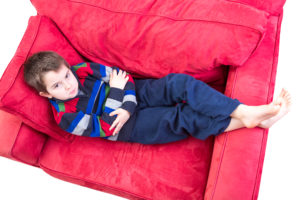Why does a child misbehave?
When a child doesn’t feel the 4C’s: Capable, Connected, Counted, and Courageous, we will see misbehaviour.
What are the four goals of misbehaviour?
Rudolph Dreikurs (Reference: Dreikurs, R. (1947). The four goals of the maladjusted child. Nervous Child, 6, 321-328.)
articulated the four goals of misbehaviour which have been succinctly summarized by the Toronto based Adlerian author and family counsellor, Alyson Schafer in her excellent book, which I have mentioned before, Honey I Wrecked the Kids, p. 68.
#1 Attention Seeking Behaviour
The Child’s Goal: Attention – keep others busy or get special service
The Child’s Belief: I count (belong) only when I’m getting noticed or getting special service. I am important only when I’m keeping you busy with me.
The Hidden Message: Notice me, involve me, I want to connect.
Read more about attention seeking behaviour here and how to address it.
#2 Power Seeking Behaviour
The Child’s Goal: Misguided power – to be the boss
The Child’s Belief: I belong only when I’m boss, in control or proving no one can boss me. “You can’t make me.”
The Hidden Message: Let me help. Give me choices. I want to feel capable.
Read more about power struggles here and how to change this dynamic.
#3 Revenge
The Child’s Goal: To get even
The Child’s Belief: I hurt others as I feel hurt. I can’t be liked or loved.
The Hidden Message: Help me, I am hurting. Acknowledge my feelings. I want to feel I count.
Read more about revenge here and how to address it.
#4 Assumed Inadequacy/Avoidance
The Child’s Goal: To give up and be left alone
The Child’s Belief: I can’t belong because I’m imperfect, so I will convince others not to expect anything of me. I am helpless and unable. It is no use trying because I won’t do it right.
The Hidden Message: Show me small steps. Celebrate my successes. I need to know I’m okay as I am and help building up my courage.
Read more about assumed inadequacy/despair here.
Although your child may move back and forth between these functions of behaviour, there may be one area that is more dominant. The four categories are a progression that show the path of discouragement.
From my earlier articles on the nine traits of temperament, you will realize that it is important not to blame yourself, as some children come into the world hard-wired with more challenging traits of temperament.
It is important that we recognize how our children are feeling and what they are trying to communicate through their behaviour as behaviour always equals communication. Once we can identify the mistaken goal of behaviour and the hidden message, we are then able to support our child’s needs.
Warmly,
 PS. Registration is now open for my next round of Self-Empowerment groups (in-person and on-line) for 7-9 year olds and 10-12 year olds. Please go to: www.sharonselby.com/groups for more information and to register.
PS. Registration is now open for my next round of Self-Empowerment groups (in-person and on-line) for 7-9 year olds and 10-12 year olds. Please go to: www.sharonselby.com/groups for more information and to register.
Want to Connect?
Subscribe now to receive free weekly parenting tips and inspiration.








3 thoughts on “What Are the Four Goals of Misbehaviour?”
Comments are closed.